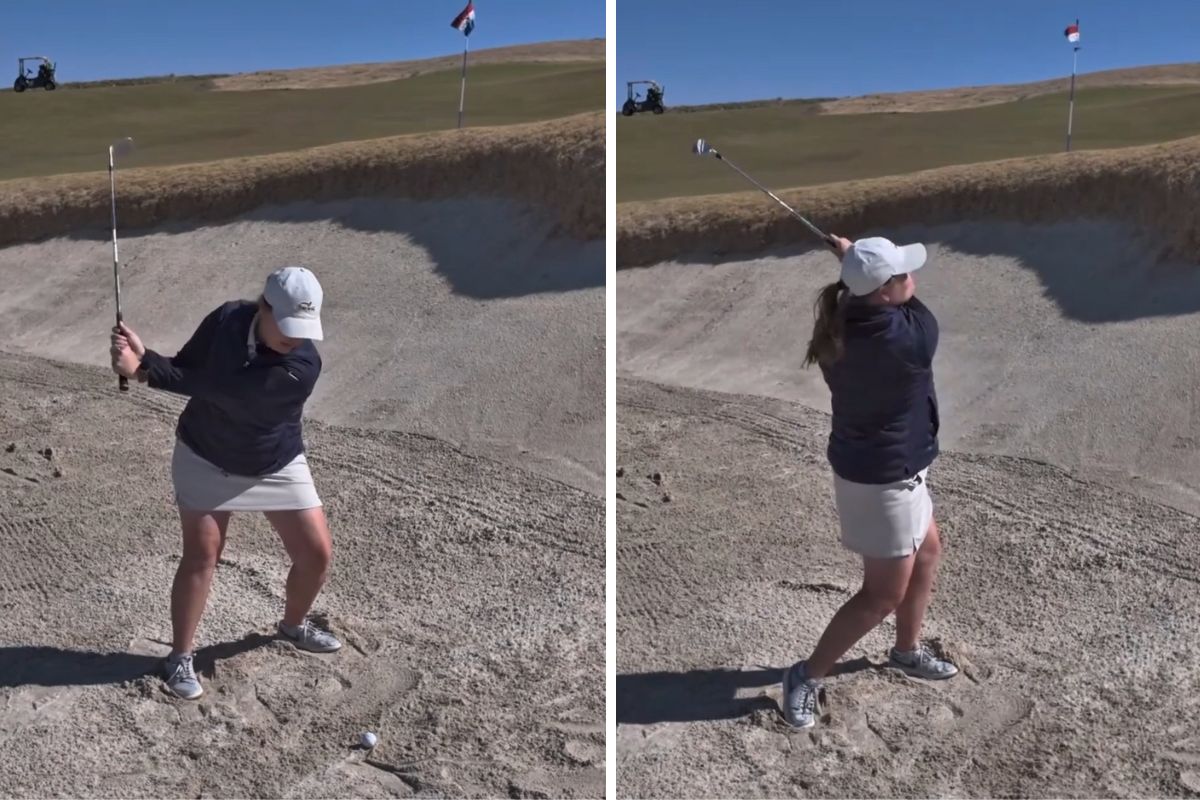Every one of us has a natural tempo, in life and in sport. It is what it is. Your tempo in the way that you walk or talk will likely be (a good thing!) similar to what shows up in your golf swing. If you walk fast, you probably will have a brisk tempo in your golf swing motion. (Nick Price/PGA Tour) If you do things slowly and deliberately, chances are that you will have a slow and deliberate tempo. (Fred Couples/PGA Tour) Tempo is defined as the overall speed of the swing. As a general rule, most golf swings take about two seconds to perform from start to finish.

Rhythm is the beat of the swing. It is how the golfer accelerates/decelerates the club through the golf swing motion. Ideal rhythm, regardless of individual tempo, is slow and smooth going back with gradual acceleration of the club from the top, through the ball. The only “quick” move is at the bottom of the swing.
Good tempo makes up for a variety of swing errors. I have seen this day in and day out with students who come for golf instruction. It is why tempo is always an underlying theme to our session, no matter what the content. Generally, most golfers’ tempos are much too fast and they are unable to coordinate and synchronize their body movements with their hands and arms. Sometimes it is perception (swing hard/fast to hit far) and other times it is simply a lack of awareness. Regardless, improvement in tempo and rhythm will lead to better ball striking and solid contact…two important factors relating to consistency…the eternal challenge!

Finding your natural rhythm is a matter of being in touch with yourself mentally, physically, and emotionally. A consistent pre-shot routine is essential to good rhythm and tempo, especially with the tendency to speed up or slow down under pressure. The pre-shot routine can have a calming influence on your nerves and may help you stay in rhythm. Deep, slow breathing, by the way, can have a very calming effect on your cadence too.
Improve your rhythm by hitting a row of balls arranged in a line, using a back and forth continuous swinging motion. Do not think of anything but good rhythm. This will help you to become aware of your natural rhythm. Also, if you tied a rubber ball on the end of a 4 inch piece of rope, swinging this like a golf club, you will get the feeling of rhythm in your golf swing…smooth, not jerky.
For consistent tempo awareness, work on smoothing out your tempo. Focus on taking the club back a little slower. Feel like it slows down at the top before you come down (a momentary pause because you change directions). Also, counting to yourself (one and two, slow…go, tick…tock, etc….) can also help habituate your tempo.
We are “different” every day…constantly oscillating in an oscillating environment. Awareness and acceptance of this very thing can help with performance when you are not at your best on a certain day. Then, when it is a good day….performance is great!
Consider incorporating these two key components into your practice and play. Balance, a critical component of every sport, is enhanced with good rhythm and tempo. Better balance equates to better golf!
Feature Photo: Minjee Lee at the 2022 US Women’s Open. All photos in this lesson taken by Ben Harpring






